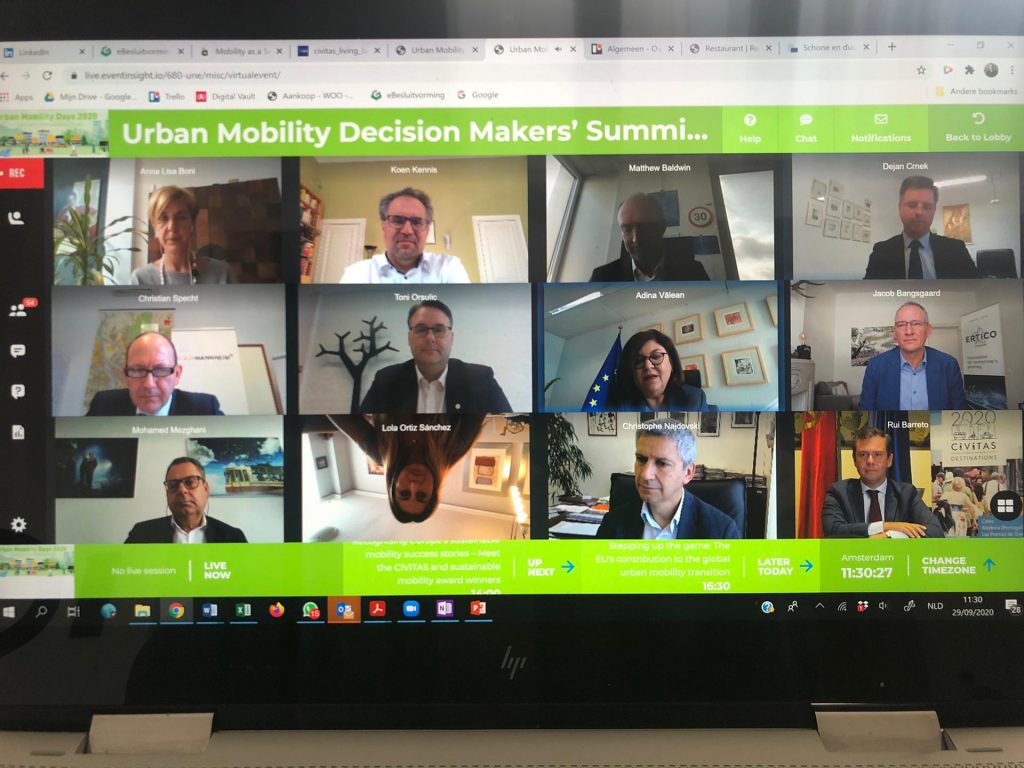(mijn inleiding op de Urban Mobility Decision Makers’ Summit, 29 sept. 2020)
First of all thank you for the invitation.
I am representing the city of Antwerp, which is located on the Trans European Transport Network – TEN-T and a proud member of Portis. Antwerp hosts Europe’s 2nd largest port.
Together with cities such as Constanza, Trieste we are working within the Portis project on sustainable mobility solutions for freight and transport of citizens. Ever since I became Vice Mayor in charge of Mobility, Finance and Tourism in 2013 we have worked closely together with employers, the region and Europe.
The views of the panellists on how Urban Mobility will look in 2050 are very interesting.
The European Green Deal focuses very much on the topic of reducing greenhouse gas emissions, shifting to greener fuels for transport, limiting subsidies for airliners and investing in large scale infrastructure for railway connections.
This is obviously important, but the risk here is transport and mobility are defined as part of the problem, not part of the solution.
We have seen during the lockdown mobility went down in huge numbers: no need to romanticise this. A city which is not accessible is doomed.
Therefor I would like to stress the importance of a user centric policy for urban mobility.
Our European citizens are concerned with issues such as:
how to to go to work, to school, how to organise shopping and leisure trips closeby, and how to do this efficient and affordable.
This is what policy makers are having to deal with on a daily basis.
Antwerp’s mobility policy is based on this user centric focus: offer and facilitate choices. And we want to do this by seducing users, not forcing, and by making sure users have all the options to choose from.
To get there we need open & standardised data which will give a big push towards the European digital agenda and innovation in Mobility towards Mobility- as – a – service.
Innovation can push us towards a digital and future proof Europe for thriving citizens, cities, regions, enterprises.
As cities, we work bottom-up and learn from eachother, as the closest layer of public service towards all European citizens. We work closely together with the regional and European level and it would be great to keep being enabled by you and your services.
This policy seems to be effective in Antwerp, given the statistics on the modal shift taking place.
My question to Mss. Valean, EU commissioner is: how can the EU help European cities to reach an ambitious modal split?

